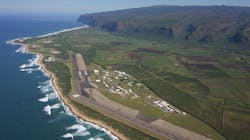The United States’ armed forces require cost-competitive energy sources that can stand up to unexpected threats and bounce back from challenges. With two new projects, energy storage is proving itself up to the task. These case studies of U.S. Army and Navy projects highlight how energy storage — a sector that employs over 80,000 U.S. workers — can play a leading role in enhancing the resilience of both military installations and the larger power grid while preserving functionality under trying conditions.
Fort Carson, Colorado, is home to the 4th Infantry Division and 10th Special Forces Group, among other units. It requires an around-the-clock resilient power supply. In January 2019, the installation opened the defense department’s largest commercially contracted, behind-the-meter battery energy storage system, which it refers to as BESS. Designed for 20 years of operation, BESS provides local grid services such as demand response, frequency and voltage support, and microgrid backup, as well as ensuring more consistent power availability with the installation’s 2-MW solar system.
BESS is designed to serve 3,400 military family residences and reduce demand charges to U.S. taxpayers by up to 10%, saving more than US$500,000 per year. The battery system charges overnight, when electricity costs are lower, and provides electricity during the day, resulting in lower utility bills.
A public-private partnership, the project is a joint undertaking of the U.S. Army, local utility Colorado Springs Utilities, developer AECOM and technology provider Lockheed Martin. Through an energy savings performance contract (ESPC), AECOM covered the project’s upfront costs, which will be repaid by the U.S. Army via the system’s annual savings.
The U.S. Navy’s Pacific Missile Range Facility (PMRF) sits on the island of Kaua’i, Hawaii, and cannot rely on the mainland grid for backup. To keep the military installation operating through island outages and meet the power and reliability needs of the local utility, the Navy leased land to developer AES Distributed Energy to develop a solar-plus-storage project that will send electricity to the grid for use by both the military and the public.
Expected to begin operation in 2020, the project will enhance the energy security of PMRF and bring the facility to 100% renewable energy. The energy storage component will help ensure consistent electricity access by storing surplus solar energy generated during the day to provide power when the sun is not shining. The solar component of the project will have the capability to be managed as a microgrid to provide power to PMRF’s mission-critical activities in the event of a short- or long-term grid outage, in lieu of diesel generators. In November 2019, the U.S. Department of Energy presented the Federal Energy and Water Management Award to the U.S. Navy’s Naval Facilities Engineering Command for this project.
The project’s output will be managed by the local utility, Kaua’i Island Utility Cooperative (KIUC), and sent to the grid as needed to meet peak demand, as well as to provide firm power throughout the day. The project will increase KIUC’s nighttime dispatchable solar capacity by 74 MWh to a total of 226 MWh, and ultimately supply 7% of KIUC’s annual energy needs.
The solar-plus-storage system allows Kaua’i to reduce its dependence on expensive and heavily polluting diesel fuel, which has historically been used as a power source on the island. The solar project is estimated to replace 2.8 million gallons of diesel each year and produce enough power for 6,000 homes. At 11 cents per kWh, the contracted price is well below the cost of diesel, which averaged 15 cents per kWh for KIUC in 2018. Replacing diesel-generated power with renewable generation on the island has had significant cost benefits for electricity consumers, helping to lower and stabilize electricity rates over the past 10 years.
See the American Council on Renewable Energy for more information.
About the Author
Lesley Hunter
Lesley Hunter is vice president of Programs at American Council on Renewable Energy (ACORE), where she oversees the design and implementation of ACORE’s programs, initiatives and work streams; aligns operations and supports the CEO in carrying out the organization’s mission. Lesley has previous experience overseeing the creation of ACORE’s publications, managing the National Defense and Security Initiative and developing content for programs and events. Before joining ACORE, she held positions at the United Nations Foundation and the Global Energy Network Institute. She is a graduate of the University of California, San Diego, where she studied international relations, anthropology and history.


